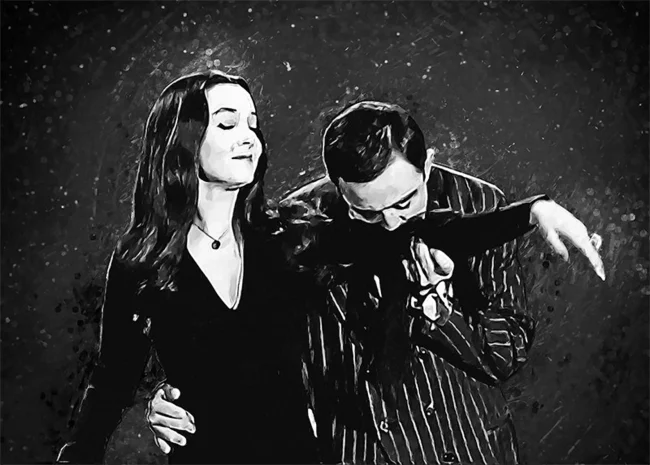
No matter what Gomez was doing, if Morticia uttered a snippet of French like “c’est la vie,’ he dropped everything, rushed to her side, and passionately started kissing her arm starting at her delicate wrist to her shoulder. “Tish!” He would breathlessly whisper, “I love it when you speak French!”

This image in a framed format is sold by ZapistaArt on Etsy here
Unlike Morticia, our French is inexistant (and we had to look that one up), so when we came across the word, ‘braconnier,’ in an article by Craig Koshyk, we had to investigate. Braconnier is a French word that translates to “poacher” in English. A poacher, of course, is a person who hunts illegally. These days, it could refer to someone who hunts without proper licenses or permits, and/or hunts outside of during designated seasons or areas.
The definition hasn’t changed too much from a couple of hundred years ago, but back then, the illegal activity (usually conducted by a poor or hungry peasant) was exacerbated by hunting on feudal land ownership by nobility, and punishment was severe because it was seen as a challenge to the authority of landowners and the state. Fines, imprisonment, or even transportation to penal colonies awaited the poacher who was caught.
What was an “honest poacher” do?
Don’t get caught.
And to “not get caught, poachers in northwestern France relied a dog small enough and quiet enough to easily slip in and out of estates owned by aristocrats. The less time it took for the dog to find and retrieve game birds, the greater the chances to get “in and out” undetected.
Enter the Brittany.
Though the modern history of the Brittany dates to the beginning of the 20th century and Arthur Enaud’s breeding program to standardize the breed, the breed got its start earlier in the Bretagne region of France. There is said to be evidence that by the mid 19th century, local hunters crossed their spaniels with English Setters (though not English Setters as we know them today).
As an aside, many experts believe that English Setter blood is why a Brittany doesn’t hunt like a spaniel. Spaniels typically hunted by flushing birds, but the Brittany points or sets more like larger gundogs. Ultimately, what they got as a versatile gun dog capable of pointing and retrieving game in dense cover and varied terrains. Versatility was key to the poacher since a poor man could only afford one hunting dog.
A dog who could help the poacher “not get caught.”
We know from an account penned by a clergyman, Edward William Lewis Davies, in 1875 that these hunting dogs were used by local braconniers in Brittany. He noted that these “bob-tailed” poachers’ dogs were often far superior to the highly-trained dogs used in more formal hunting settings. The breed had exceptional hunting abilities, calm dispositions, and a willingness to please — qualities honed by poachers who selected for traits that made the dogs perfect for poaching.
By the end of the 19th century, the breed was well-established across areas of France, and had begun to make appearances at dog shows, in particular, the Paris Dog Show in 1900. A year later, M. Le Comte Le Conteulx de Canteleu wrote of the “Chien de Bretagne” (or Dog of Brittany”) in, “Chiens Francais et Chasse Anglais” which many think is the first use of the name to describe the breed.
Respectability had arrived for the breed developed, in part, by illegal actors.
Image by ©Iurii Pozdnikov//Dreamstime.com
